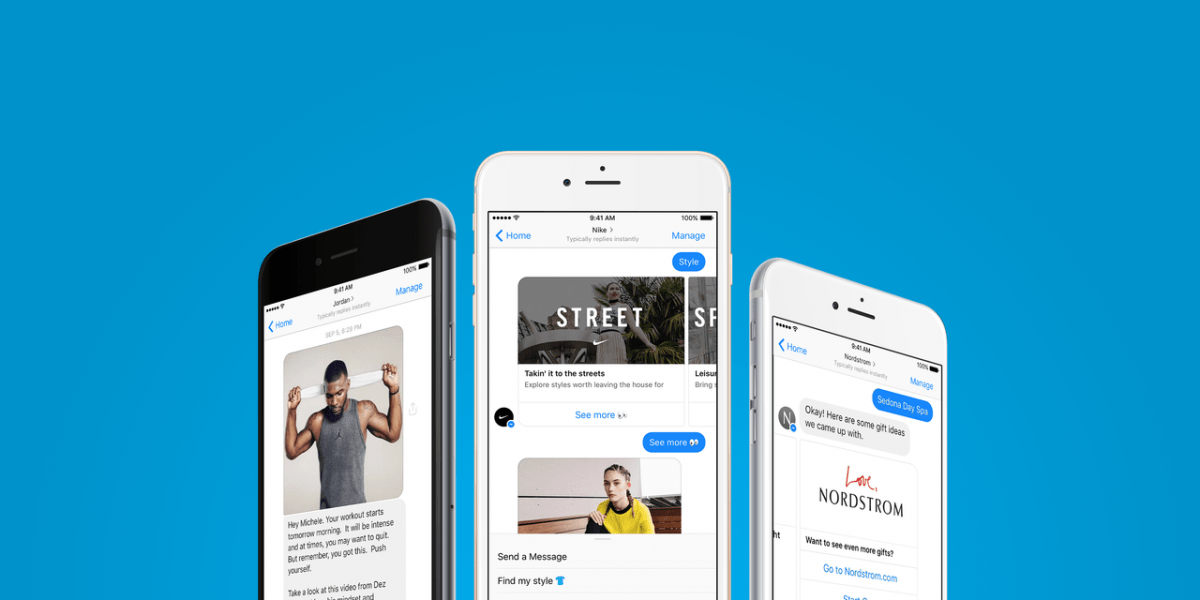WHAT APPAREL BRANDS NEED TO KNOW ABOUT CHATBOTS


Experience shopping is the new norm, driven by millennials’ appetite to value the act of shopping as much as the enjoyment of getting a good deal. This means that consumers today crave the right experience in acquiring their apparel goods and services, as well as bargains. Unfortunately, much of online shopping today remains largely impersonal, despite all the new technology that aims to customize and personalize the online shopping cart experience.
However, we have entered a new era of online shopping, with new technology that’s designed to help personalize the experience even further, which can have a significant impact on apparel brands. Specifically, we’re talking about the chatbot.
This new breed of customer interaction allows brands to connect with their customers on a personal level while creating a more natural interaction that mimes the physical world. Although still relatively new to the scene, this technology is bringing businesses and consumers closer together by bridging the communication gap between a brand and its customers.
Chatbots are one feature of what is now called “conversational commerce,” which enables transactions to occur between brands and customers via messaging interfaces like SMS or through WhatsApp, Facebook Messenger, and other mobile messaging platforms. Think of it as a conversation with your favorite apparel retailer.
In the standard brick-and-mortar environment, you stand on opposite sides of the counter and chat about what you want. When you are done, the retailer tailors your article of clothing and hands it to you. And when you add technology to the mix, the same thing occurs, however instead of chatting across the counter, you are chatting across text messages.
The challenge is doing this at scale. It’s easy to serve one or two people a time, just like a traditional apparel retailer does. However, when you want to scale that to hundreds or thousands of people who want to browse and order, you need to leverage the benefits that technology brings to the table.
Chatbots (or bots) and artificial intelligence (AI) software are used to tailor the conversation toward each individual customer’s needs. This can be based on historical data patterns for the user, preferences they’ve expressed, recommendations the brand has, or any number of other criteria.
With the proper design, the result of using these chatbots is a customized experience that improves the customer’s experience and eases customer service options for the company. Chatbots allow brands to respond more quickly to customers while reducing their spending on customer service associates.
What Is The Right Chatbot Strategy? Increased customer satisfaction, reduced costs to scale, and improved ability to engage customers across many mediums (from social media, websites and apps to messaging) are just a few of the reasons that this technology is being adopted globally.
Both times and technology have changed and new opportunities have emerged. Facebook, Kik, WhatsApp and others have now enabled users to interact with businesses on their platforms, through what is known as Application to Person (A2P) messaging. Companies have deployed chatbots which can assist customers with tasks such as simple questions about a brand or product, scheduling appointments and even making payments for products and services.
Aligning Chatbots With Your Brand. Chatbots have shown promising results in many scenarios, but these conversational commerce helpers may not be right for every business. Here’s the thing with chatbots; they are a relatively new technology when it comes to the marketplace.
Therefore, most consumers have never interacted with a bot and so may be hesitant when it comes time to engage with one. But as more chatbots engage with customers, the more accurate and efficient they will become, improving the customer’s overall shopping experience.
So how could a chatbot assist both you and your customers? If you are looking for a way to start using bots to interact with your customers, an easy entry point may be through automating some of your routine customer service queries.
For example, take the frequently asked questions that your customers commonly ask, and set up a bot to handle those. This will give you a feel for what your customers’ reactions will be before you invest in building more complex tasks that require the development of new software.
Brian Heikes is vice president of product at 3Cinteractive, which extends the connection between customers and brands, driving increased loyalty, brand awareness, and results.








